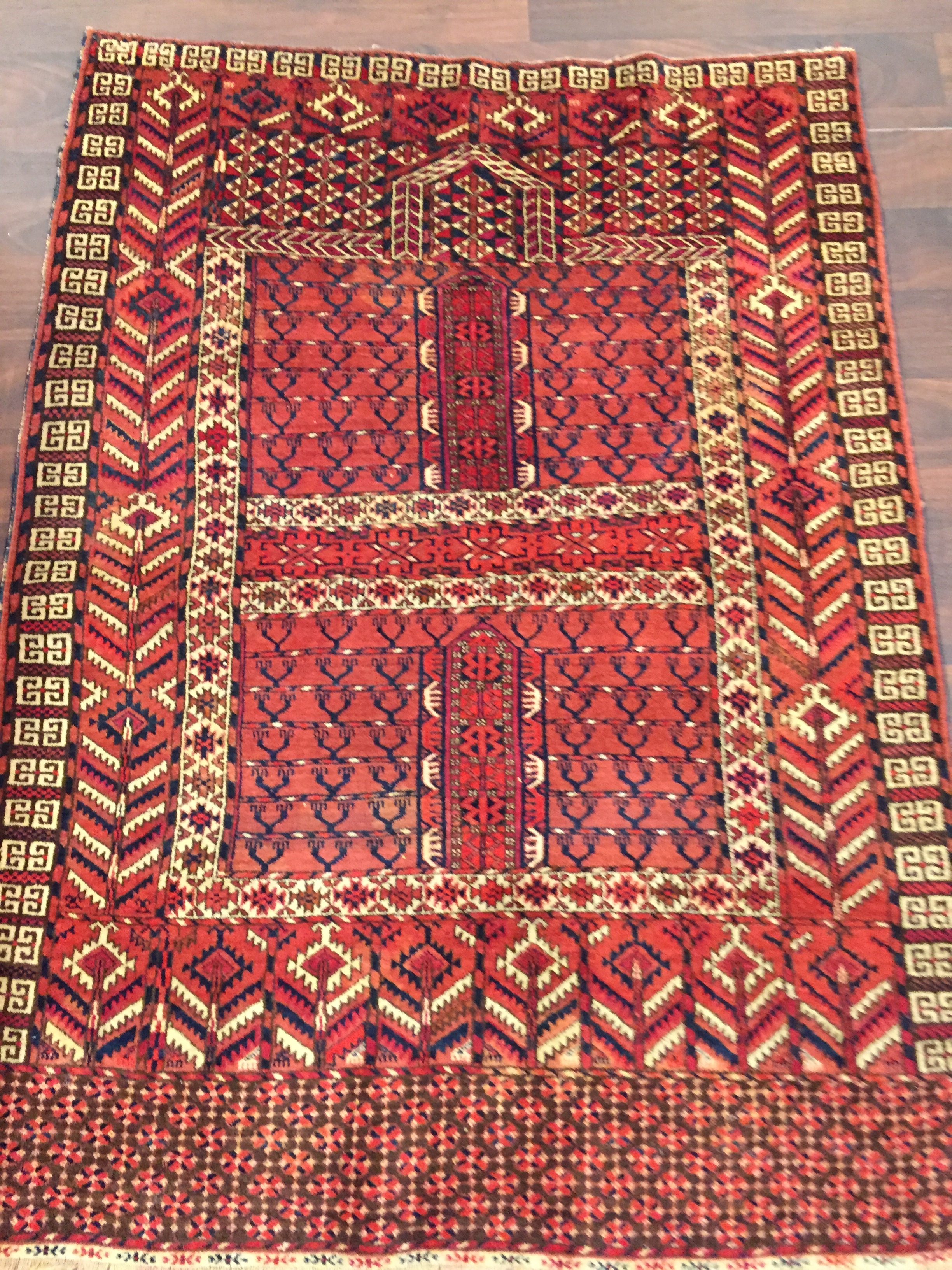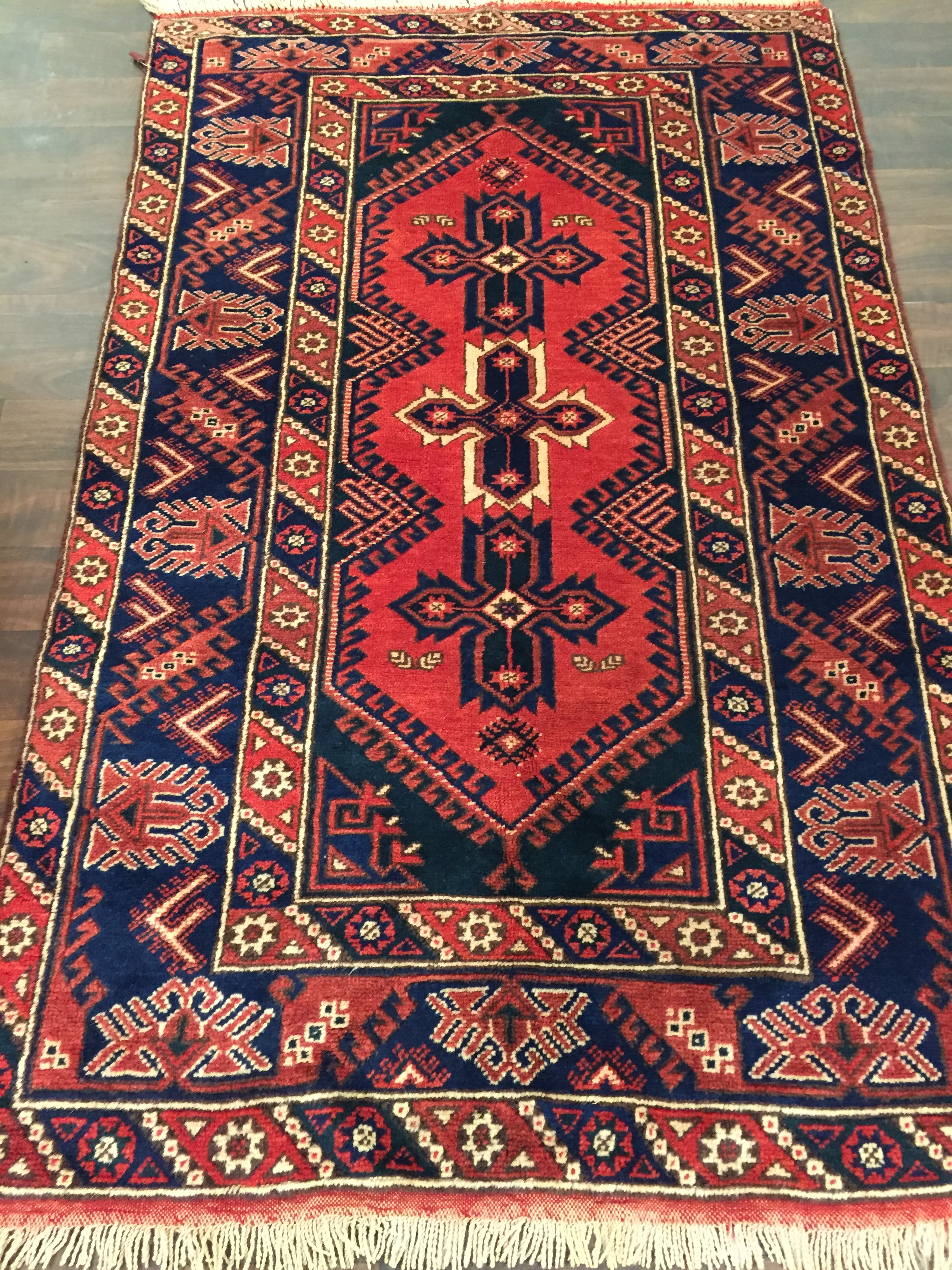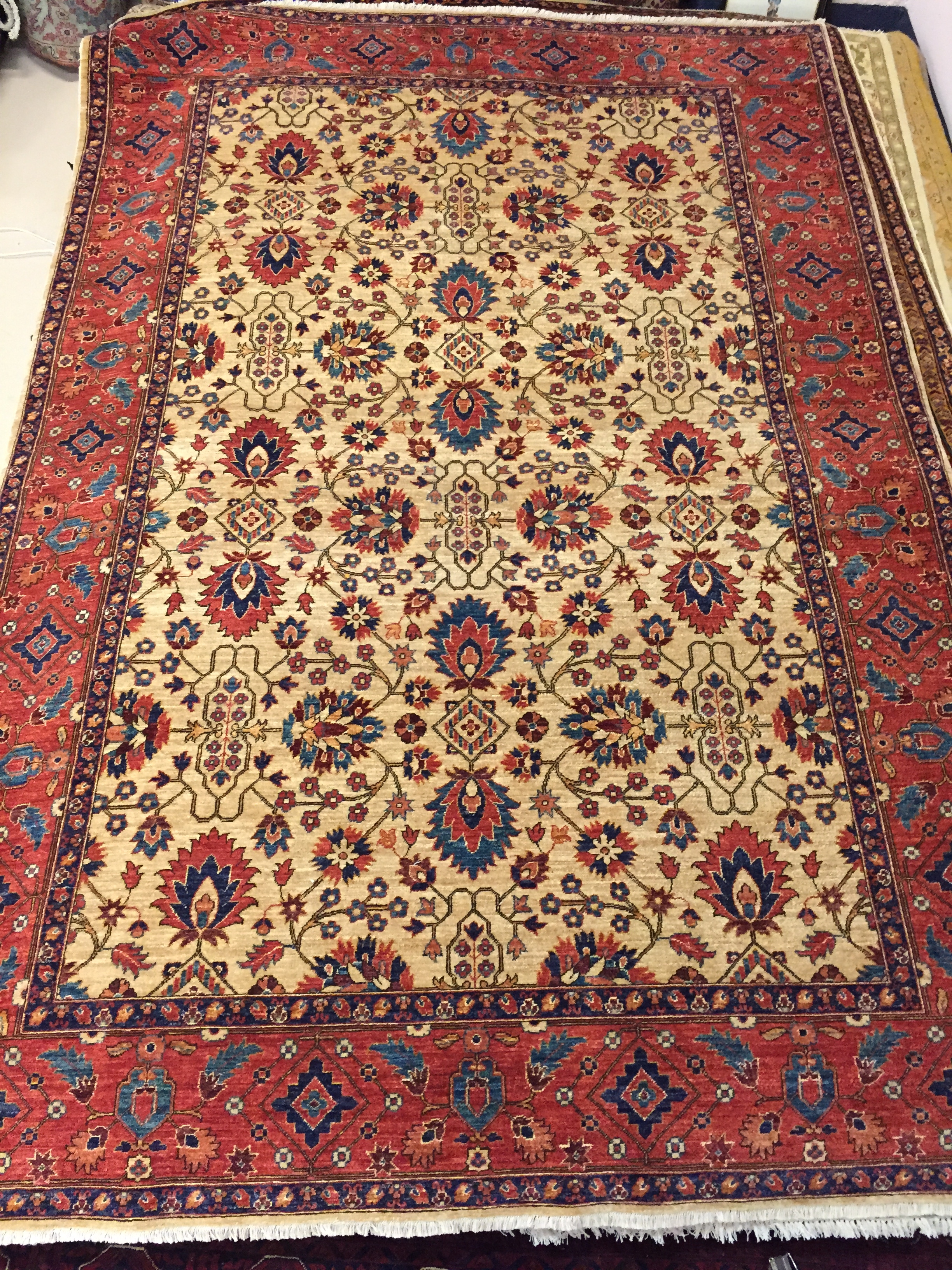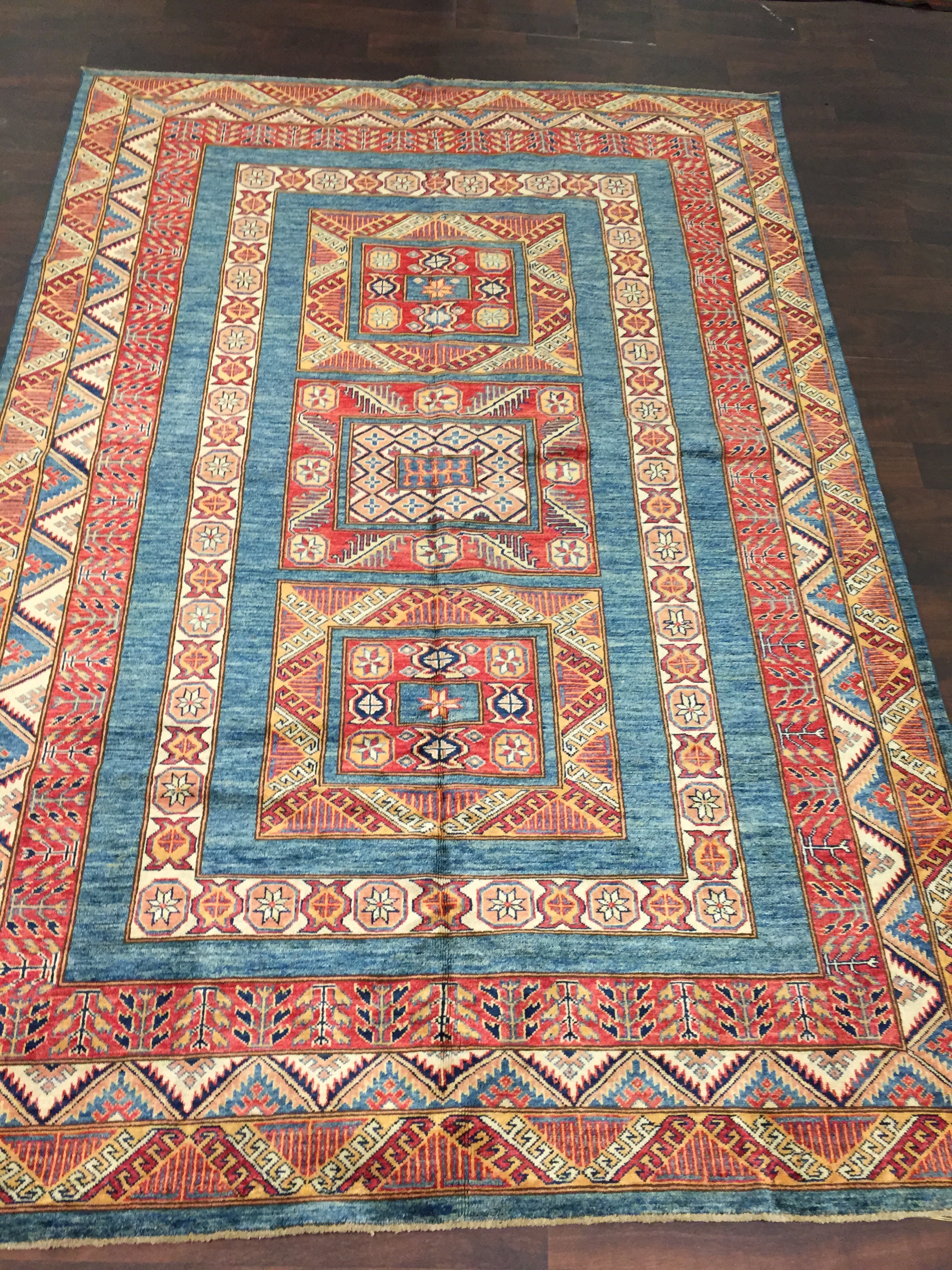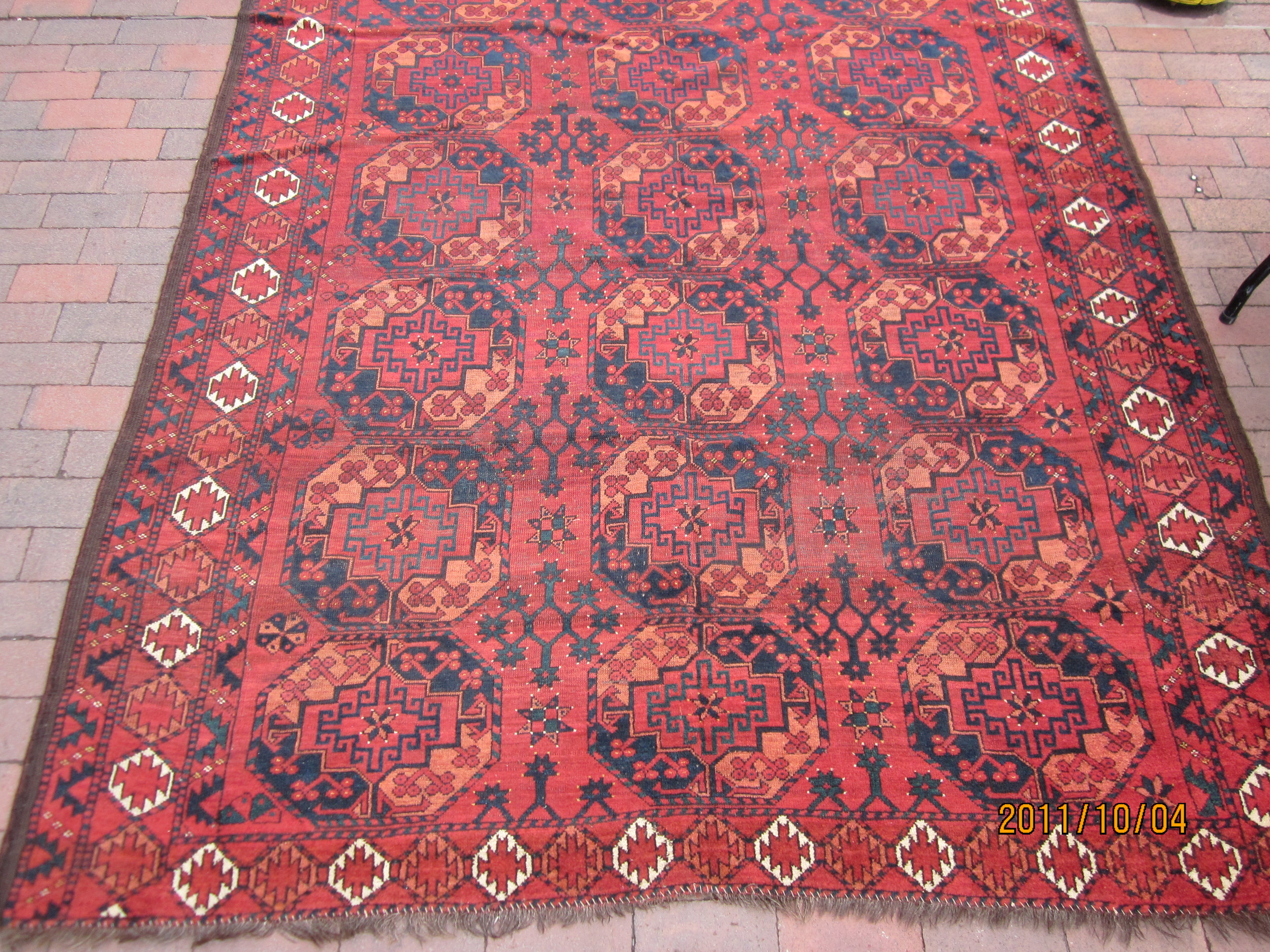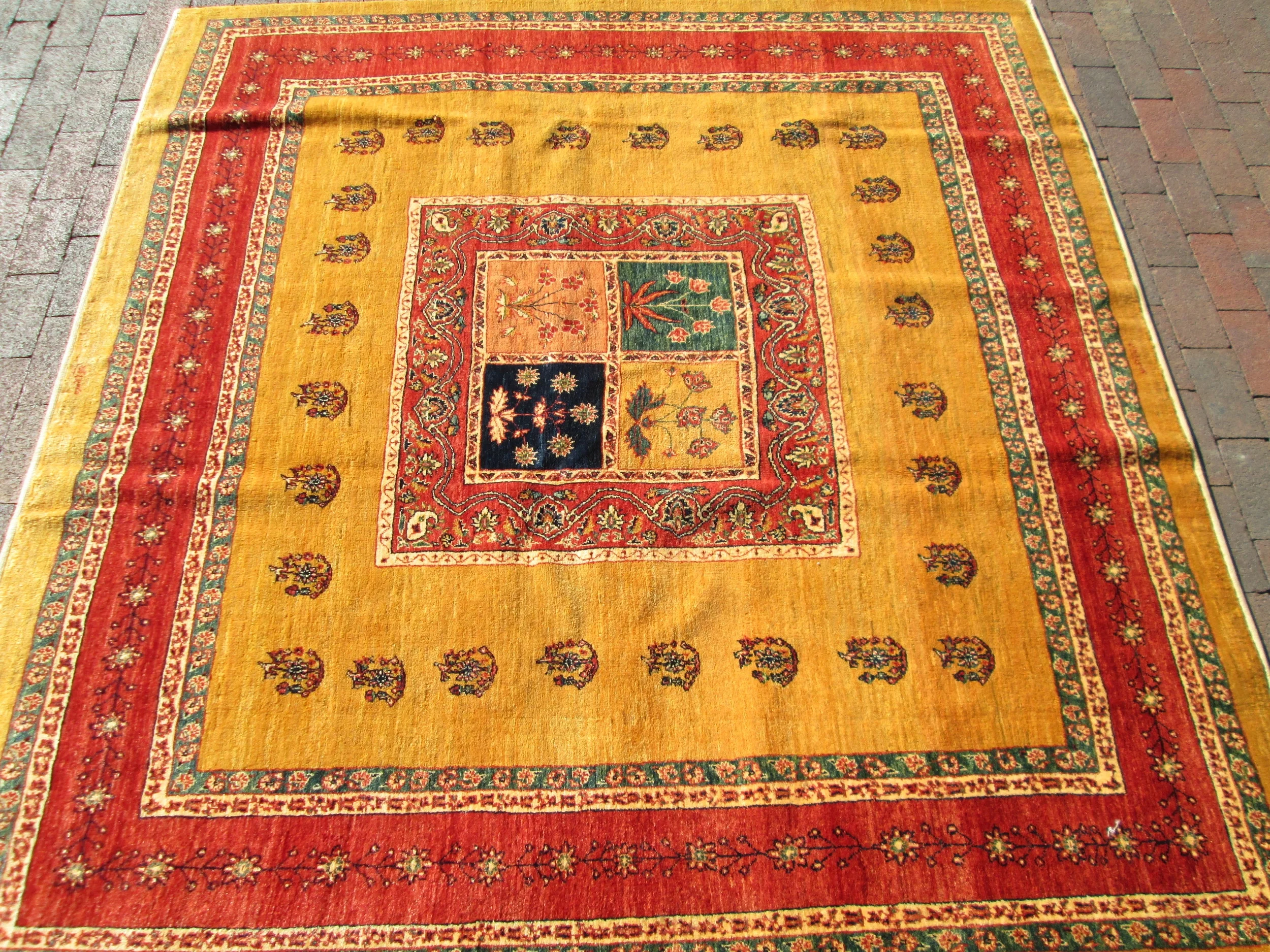PILE CARPETS
Pile carpets, the oriental rugs with which most people are familiar, have been produced for thousands of years. The earliest example, the Pazyryk Carpet was preserved by being encased in Siberian ice and dates from 500 B.C. Even this ancient piece shows tremendous skill and complexity. What is definitely known is that the craft of carpet making had become established in Turkey and Iran by the 11th century and somewhat later in India. While kings and emperors often established royal looms, carpet production largely remained a nomadic or village craft.
A pile carpet is constructed as follows: A weaver makes a foundation of parallel perpendicular strands of wool or silk (the warp). She then ties knots to these strands which form the upright pile. Horizontal strands(the weft) are then passed over and under the warp to secure each row of knots. (See Diagram) Traditionally the wool or silk used for the pile was dyed with natural materials such as plants, berries, roots and bark. Color depended not only on these materials but on the characteristics of both the wool and the water. Natural dye carpets are prized for their mellow colors but synthetic dyes, introduced into the Middle East in the mid 19th century, solved the problems of wool decay caused by some natural dyes.
Motifs in traditional carpets are extremely varied: floral, abstract, and pictorial. Many tribal carpets are often geometric in design. One nearly universal design is the prayer rug in which a pointed mihrab or prayer niche serves to give the carpet a direction so it can be pointed toward Mecca and used for prayer.
